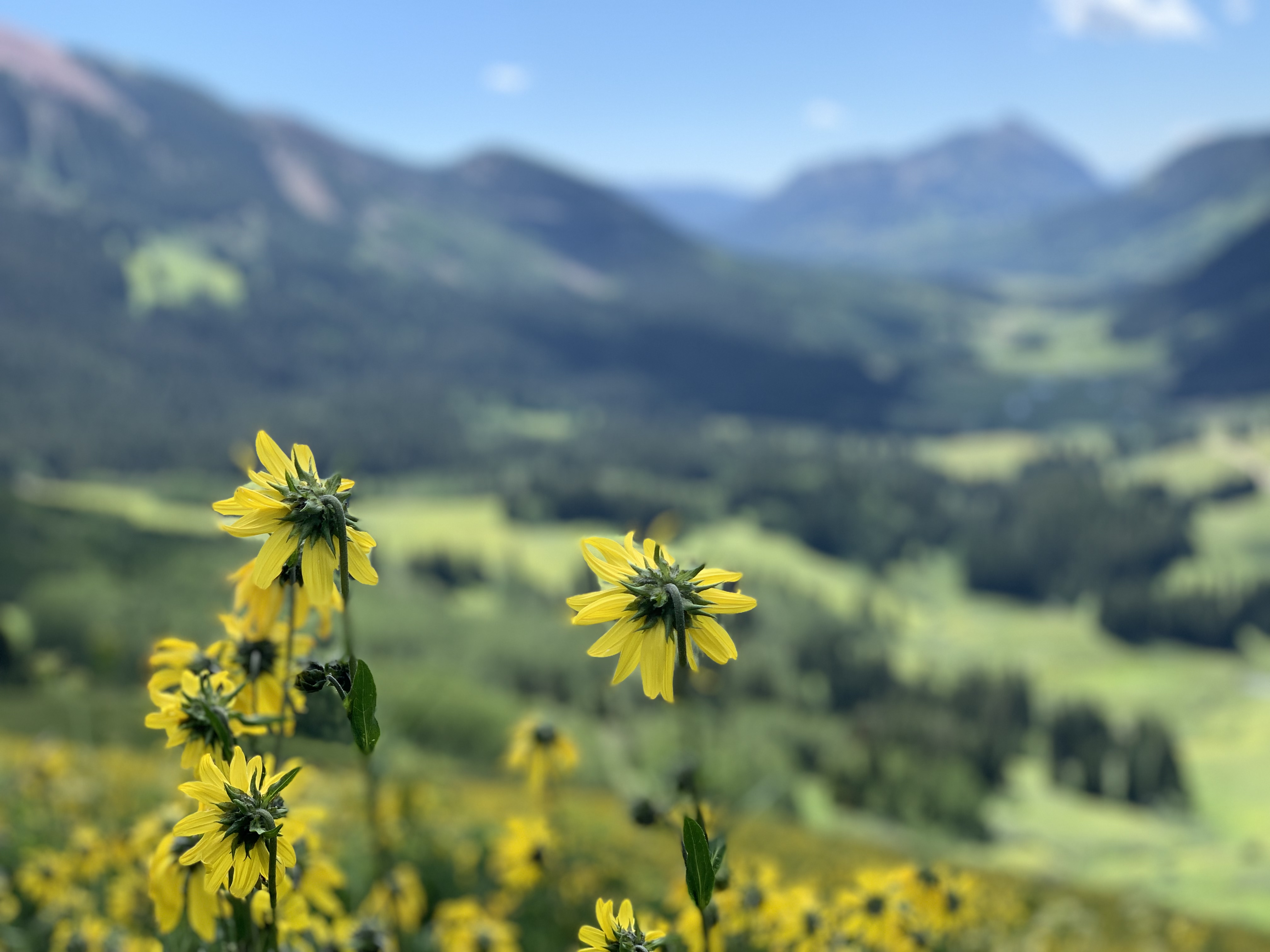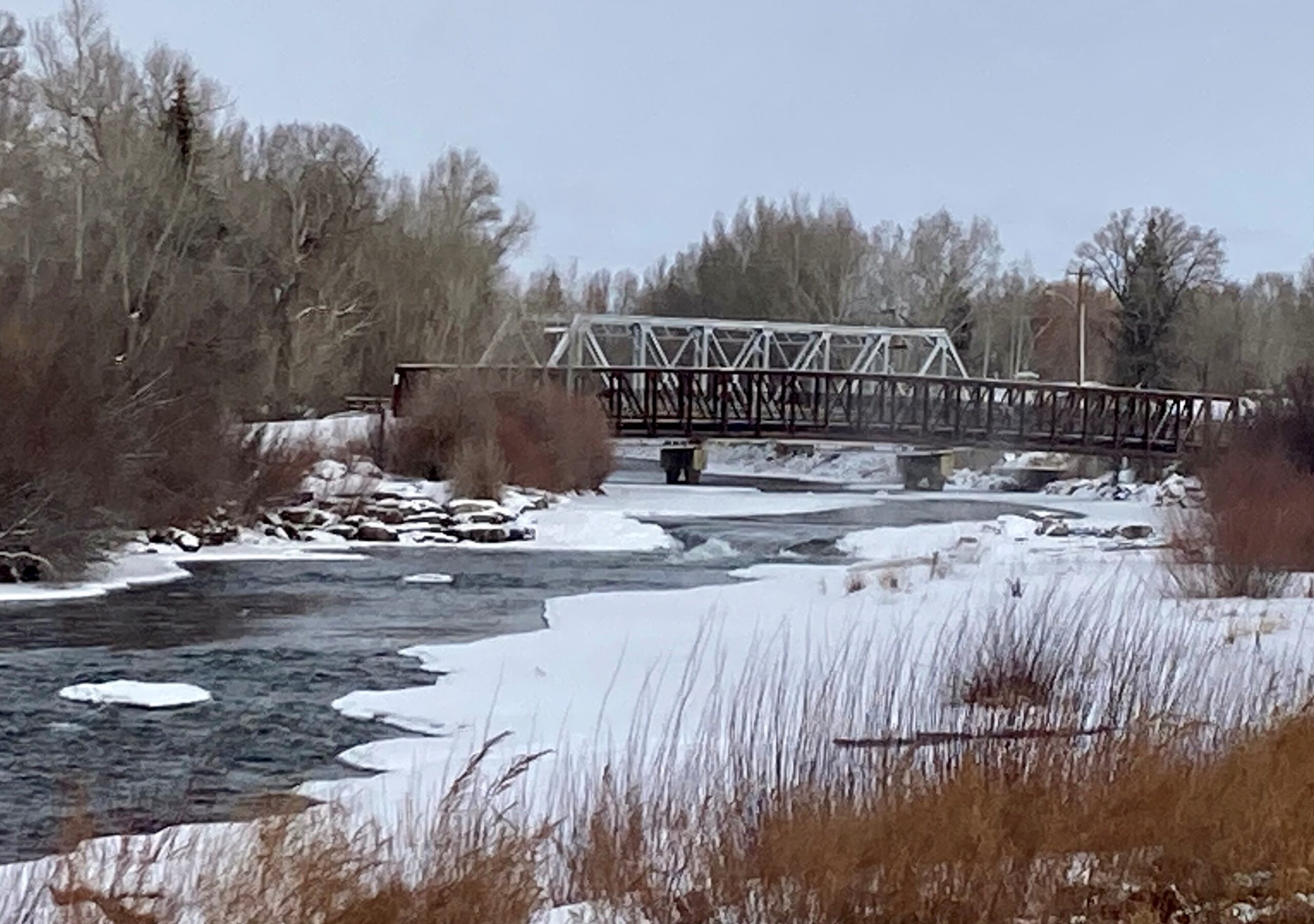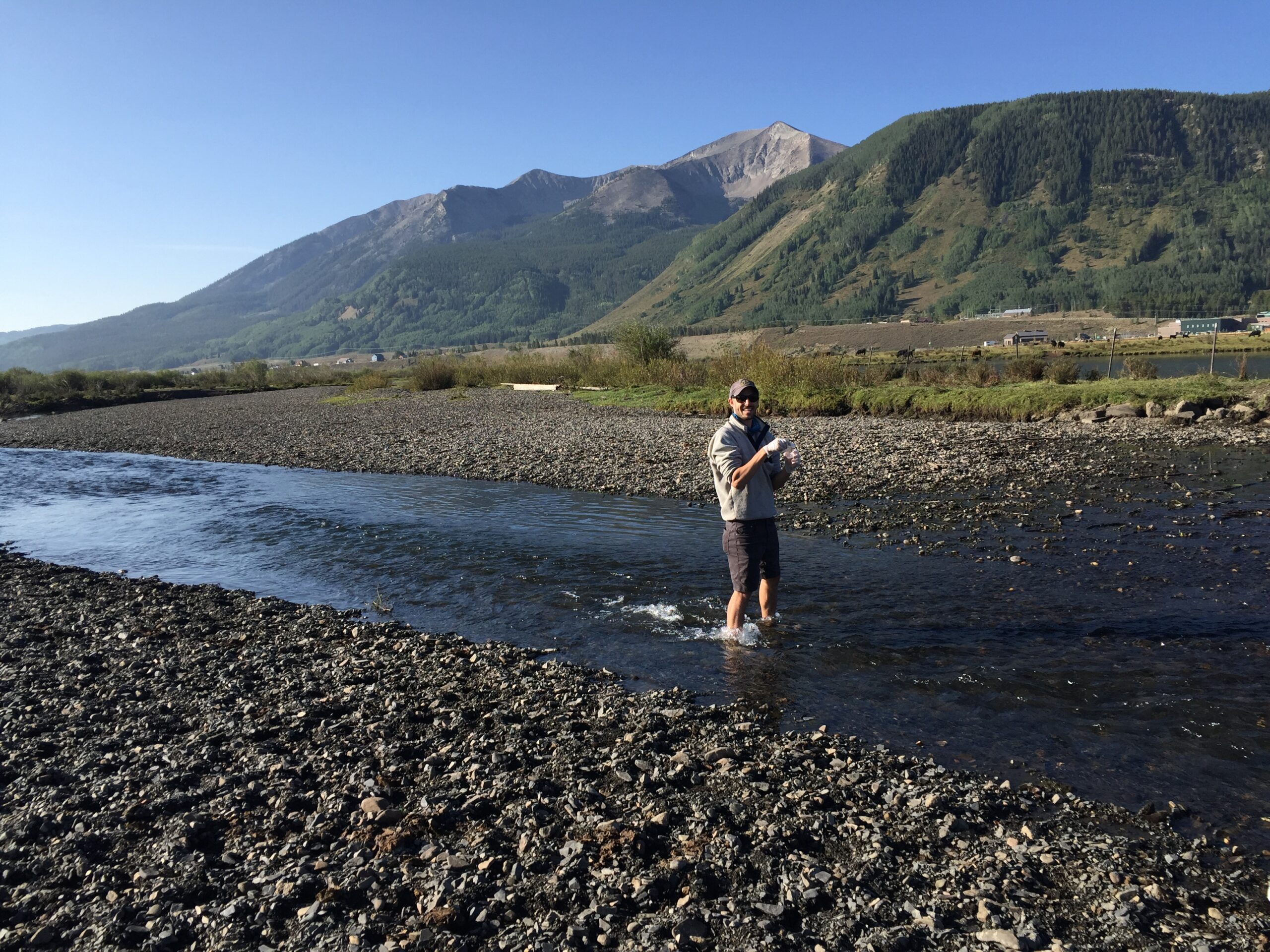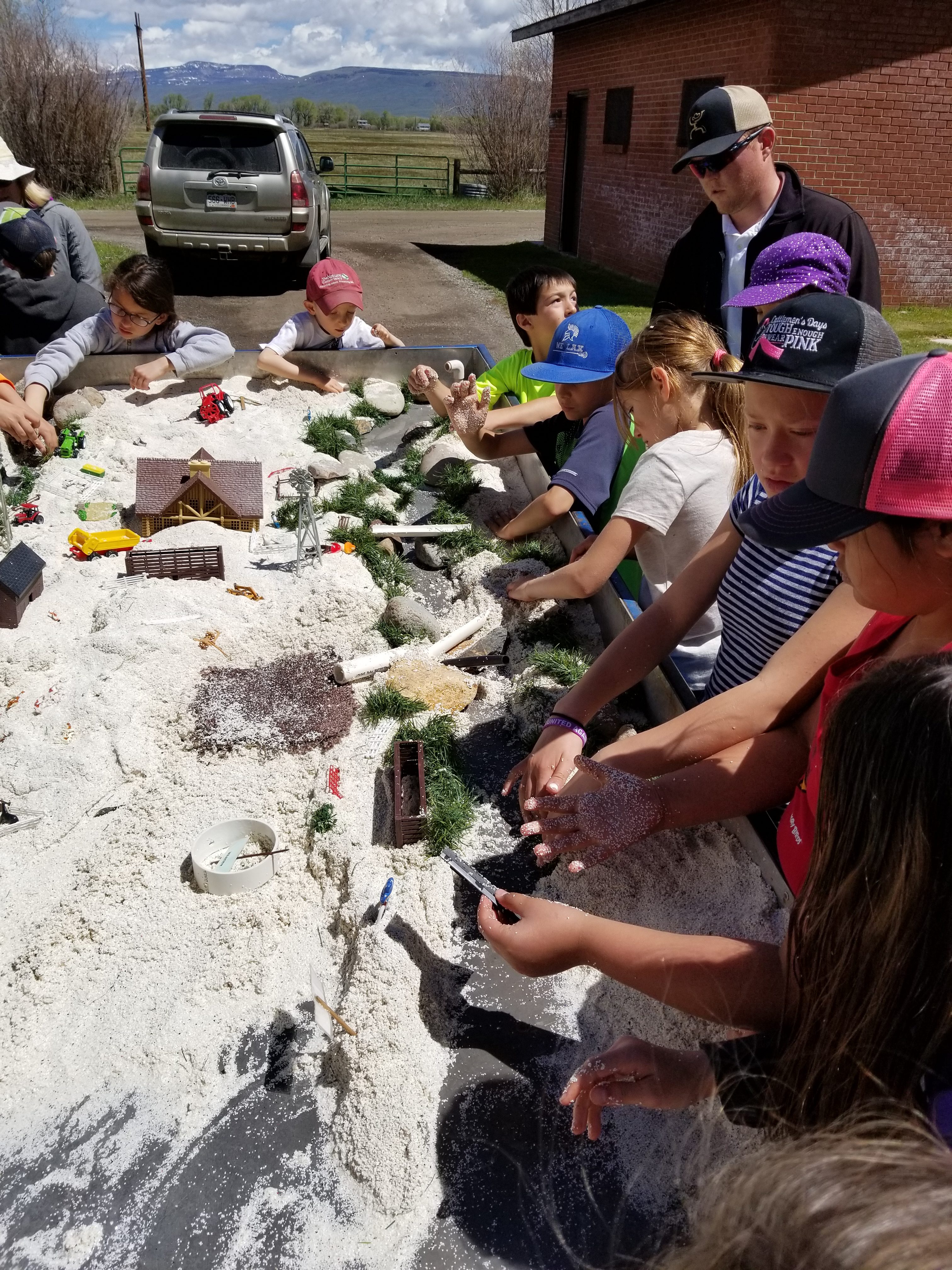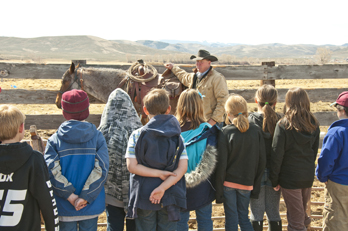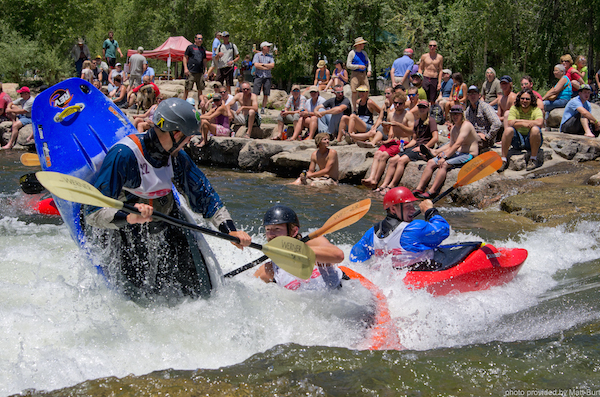Spring is the time that the grass begins to grow, and the cows start calving. In Gunnison, Colo., spring is also the time to teach local students about agriculture firsthand. Through the small animal show and Ag Venture Day, students got to learn first hand what agriculture is all about.
The small animal show was held on April 16, and was put together by the Gunnison Valley Cattlewomen. The Gunnison FFA chapter volunteered at the event, and nearly 600 students attended the event.
“The purpose of this event was to get kids to appreciate the animals they are around. A lot of kids don’t know what these animals are for. We had one young man that said when this animal turns into meat, will it be chicken, pork or fish? That’s the kind of stuff we are dealing with. People don’t realize cows have to be milked in order to have milk for them to drink,” said LaDonna McLain, the organizer for the show.
The show has been an annual event in Gunnison since the 1960s, and McLain has organized it since the 1980s.
At the show, students from the ages of pre-school through second graders got to see and learn about draft horses, full size horses and a foal, miniature horses, dairy cows, beef cows and a calf, pigs, chickens, rabbits, ducks, goats, sheep, puppies and kittens.
The students were broken into groups and went to each station to learn about each animal, and how they are used on the farm. FFA members were stationed at each booth to teach the children about the differences in the animals.
“We put one FFA kid with each of the animals to explain to the kids what they are and show and tell what they are and what they do,” said McLain.
The event also had a station with a local rancher, Lee Spann. Spann talked about what it is like to be a rancher. “One of the things he highlighted was at one time we had 30,000 head in this area, and now we are down to 6,000. He also talked about managing the cattle, and what he does for them every day. He was very down to earth and he related to the kids,” she said.
Each student was given a bag with information on beef, a cookie, a gummy worm, which is a beef byproduct, and coloring books that talked about agriculture.
“We are really promoting beef, but we want them to have experience with everything. People don’t know where eggs come from. They think it comes from the grocery store. If you work with the little kids, they will be better adults when they get there. You have to show them where their food comes from,” explained McLain.
One of the students to help with the event was Tyler Haas, a junior at Gunnison High School and a FFA member.
“We scattered around the livestock and went over all different things with the kids. We really enjoy working with the cattlewomen on this. It’s a highlight community service project that we do each year. We are just going over the basics with the kids. One of the questions I was asked was what kind of a milk comes out of a colored cow. We had to explain to the kids that there’s a difference, but we won’t get chocolate milk. We also helped to explain the difference between a dairy and a beef cow,” Haas said.
He added, “I helped with the beef stage. I went over the differences phases of the cattle industry including branding, calving, and summer grazing on pasture. It’s a big deal for the FFA and we look forward to it each year.”
The beef cattle that were at the event belonged to Haas, who started his own business called Haas Show Cattle. He currently has 13 head of cattle, and hopes to continue raising cattle, even after high school.
Haas also helped at the Ag Venture Day which was help on April 17 at the W-Mountain ranch near Gunnison. A total of 550 students and their teachers arrived at the ranch, where they unloaded into a set of cattle pens.
“Ag Venture day for Gunnison County kids is an annual affair, but this year they had no idea they were going to be educated by walking the actual footsteps of a rancher, or rather the footsteps of a cow,” said Eric McPhail, Gunnison County Director for Colorado State University Extension.
“CSU Extension has always been a leader in agricultural education, from agents teaching kids about 4-H livestock projects to teaching the producers about land management. However, this day was different, and it was evident from the smiles on all the kids’ faces,” he said.
On Ag Venture day, students were again broken down into groups, where they traveled from station to station, learning about the different parts of a live, working ranch.
One of the stations was taught by McPhail, who talked about cattle marketing and transportation. The kids went through the system as if they were the calves. The girls and boys were separated into pens of steers and heifers, and then weighed on a large cattle scale.
“Then it was through the rickety gates and manure to the ring, where the kids were auctioned off to the highest bidder and heard the actual sounds of a livestock auctioneer,” he said.
Through this process, McPhail talked about the educational side of how they are marketed. “Cattle are sold by the pound by either public or private treaties. If a calf brings a dollar, that doesn’t mean that it only brings a dollar. Scales have to be certified and a state policeman checks to make sure. The boys enjoyed learning that they typically bring more money than the girls; however, their boasting was short, as they learned they typically don’t live as long as the girls,” he explained.
After that, the students were brought up the chute into a semi cattle trailer, where they got to see how the inside works and how the cattle are transported. “Truly, it was an experience for the kids, but also for their teachers, as very few had ever been that close to a cattle trailer, much less inside of one,” he said.
Stations like this one helped the students to get a first hand experience of what it is like for a cow. “The kids had fun and learned a tremendous amount about our local cattle ranchers, how their life isn’t all glamour, and everyone came away with a bit more respect for the rancher and his love for animals,” McPhail said.
Other stations included branding, taught by a local brand inspector; cattle grazing for land conservation, taught by a local USFS manager; rancher equipment and working lifestyles, taught by local ranchers; and food, taught by extension 4-H agent Nadine Henry.
Haas also volunteer at Ag Venture day, and taught a station about grazing. “We were trying to get out the message that we are here on the high mountain pastures, so we need to protect them so we can use it every year. Sometimes it hard because it’s human instinct for people to think something and just go with it, so events like this are really important because it teaches people what really happens,” Haas said.
McPhail agrees that teaching students is vitally important. He said, “Agriculture is the oldest and debatably the most important industry in America, but yet kids today know nothing about it. Honestly, most adults are so far removed from ag, that they need educating also. However, our kids are the ones going to be feeding the world in a few years. Kids need to know where our food comes from, and this is one industry that needs to be shown to kids, not just told from a story book, so that they can make their own informed decisions in the future.”







